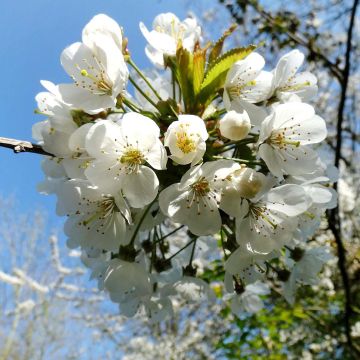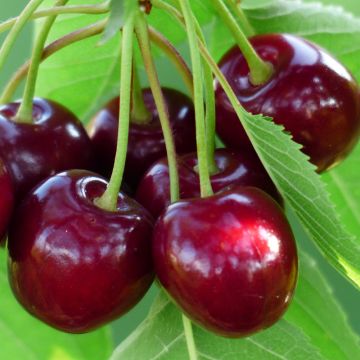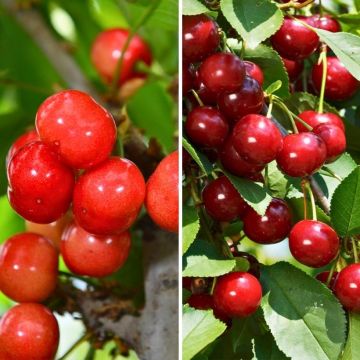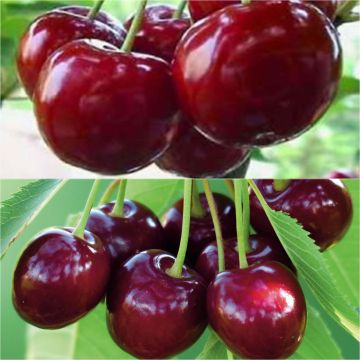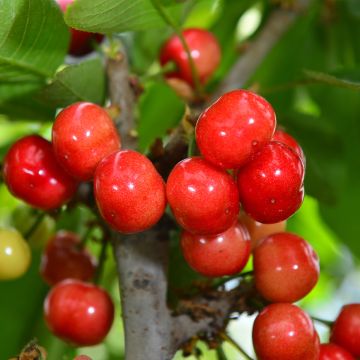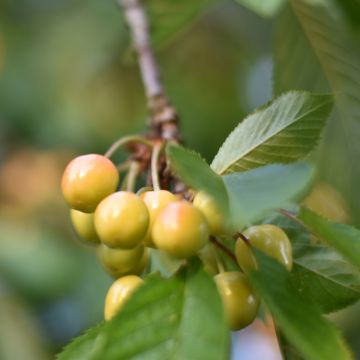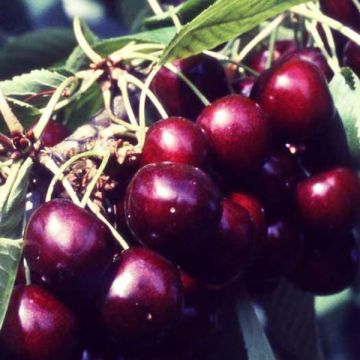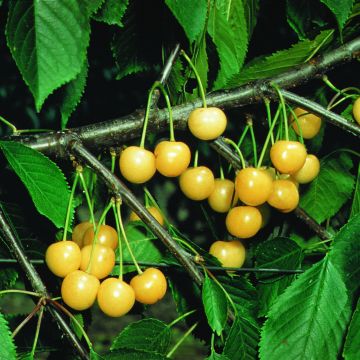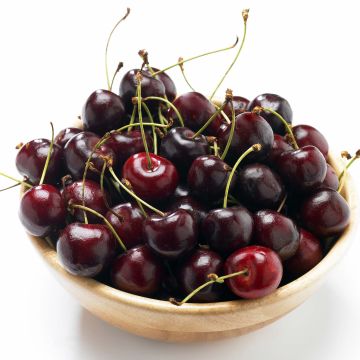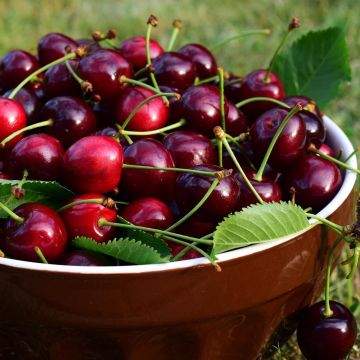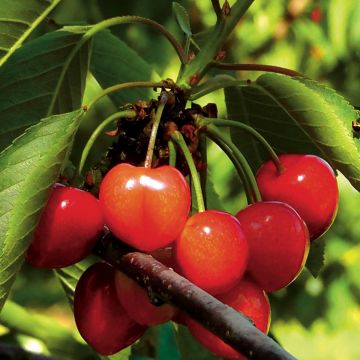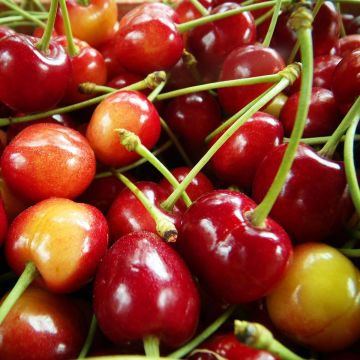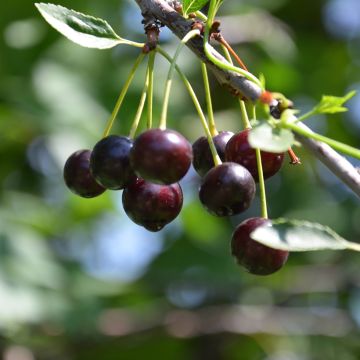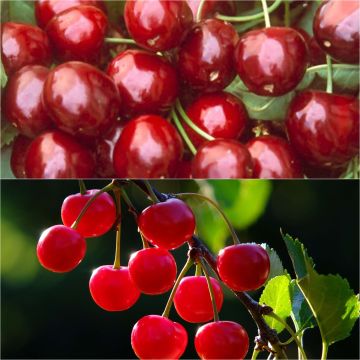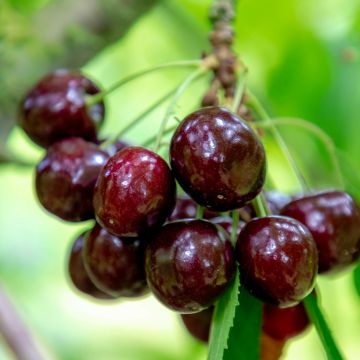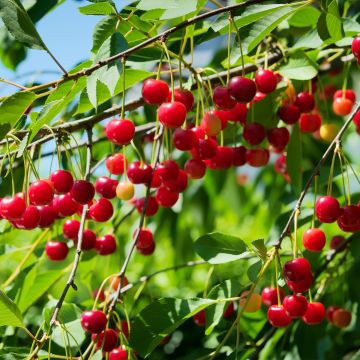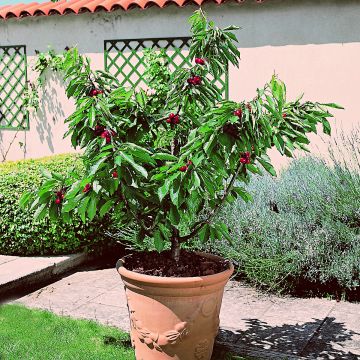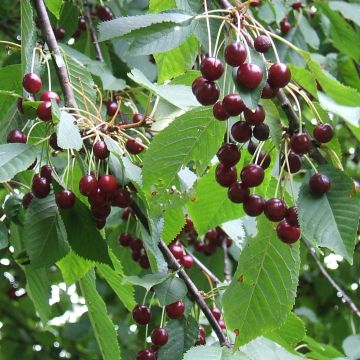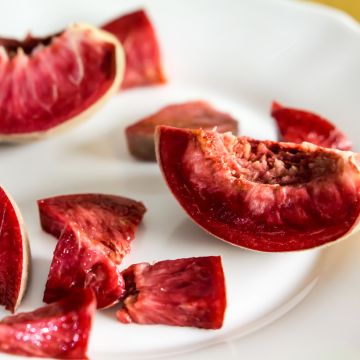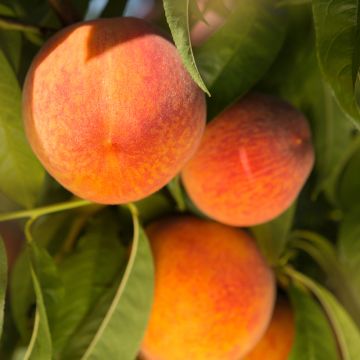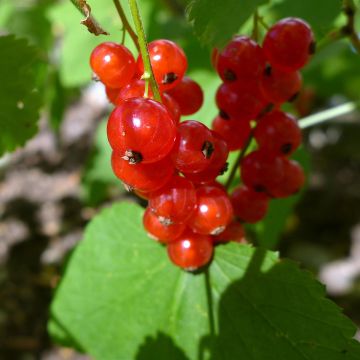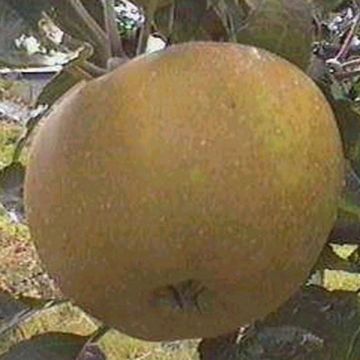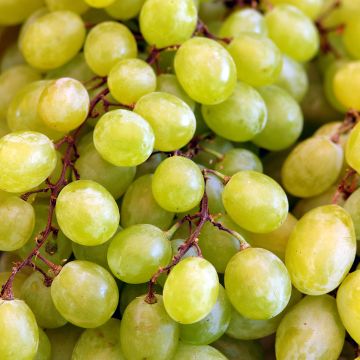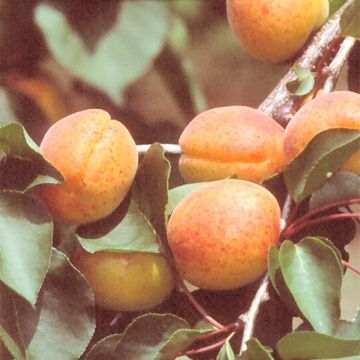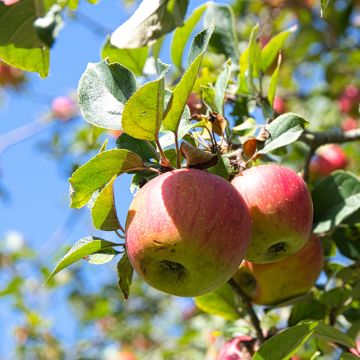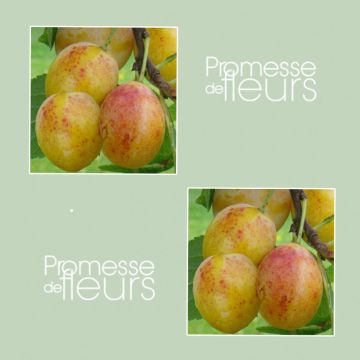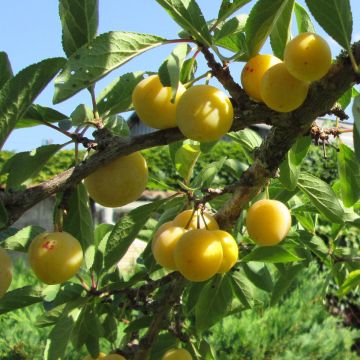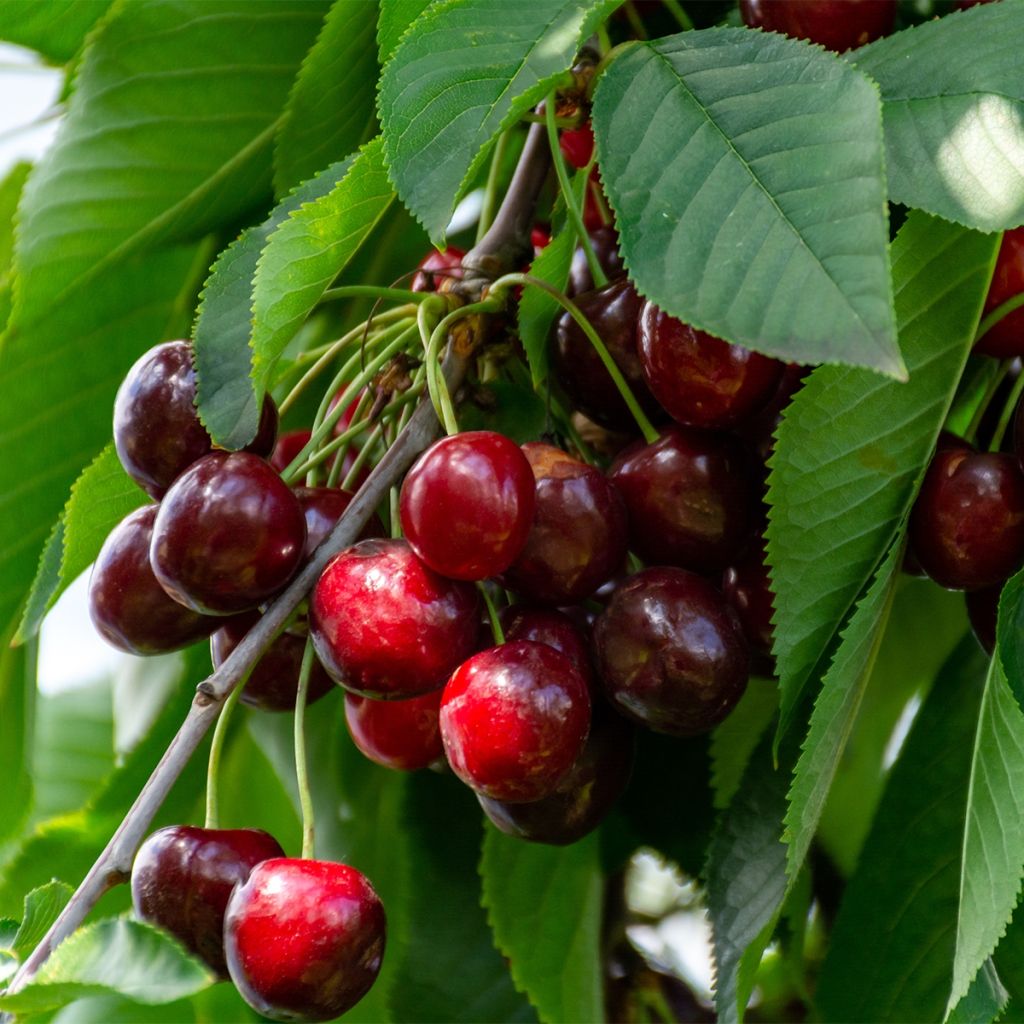

Cerisier Bigarreau Marmotte Bio
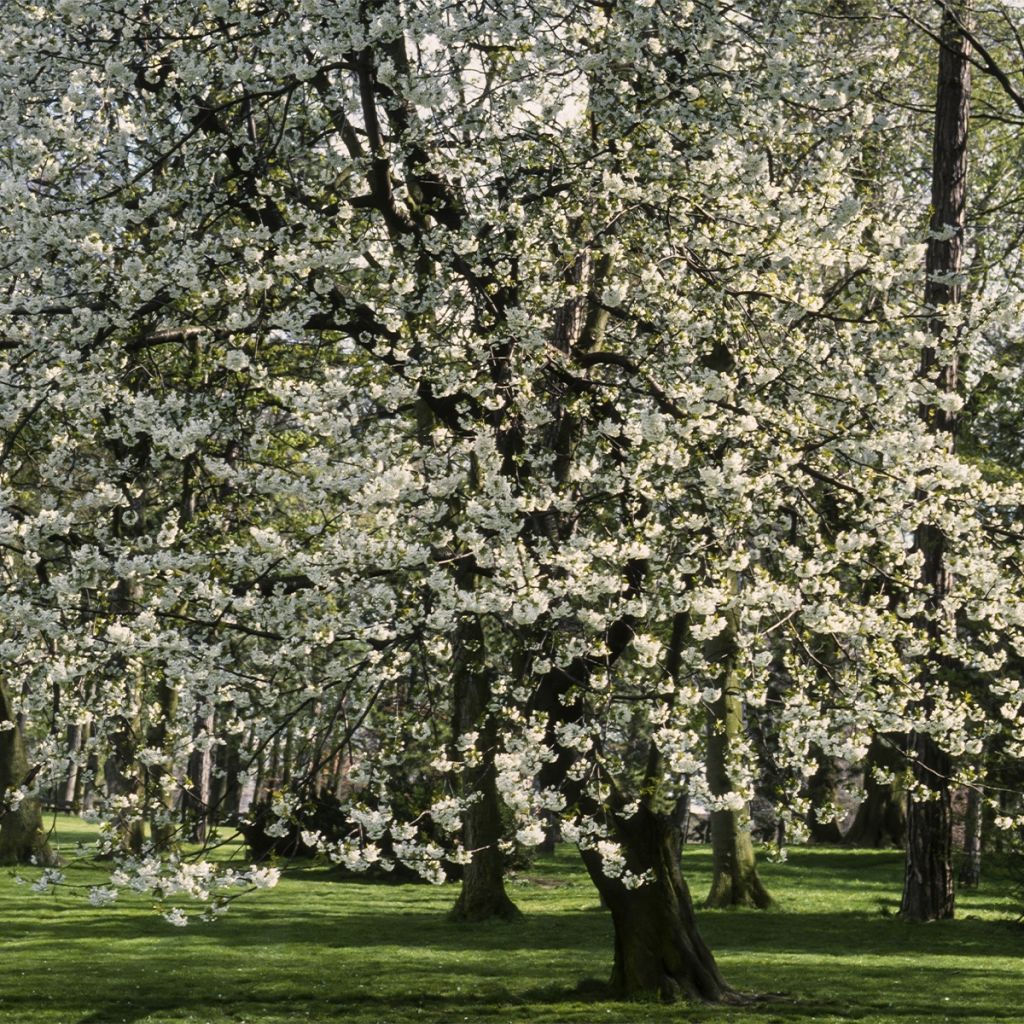

Cerisier Bigarreau Marmotte Bio
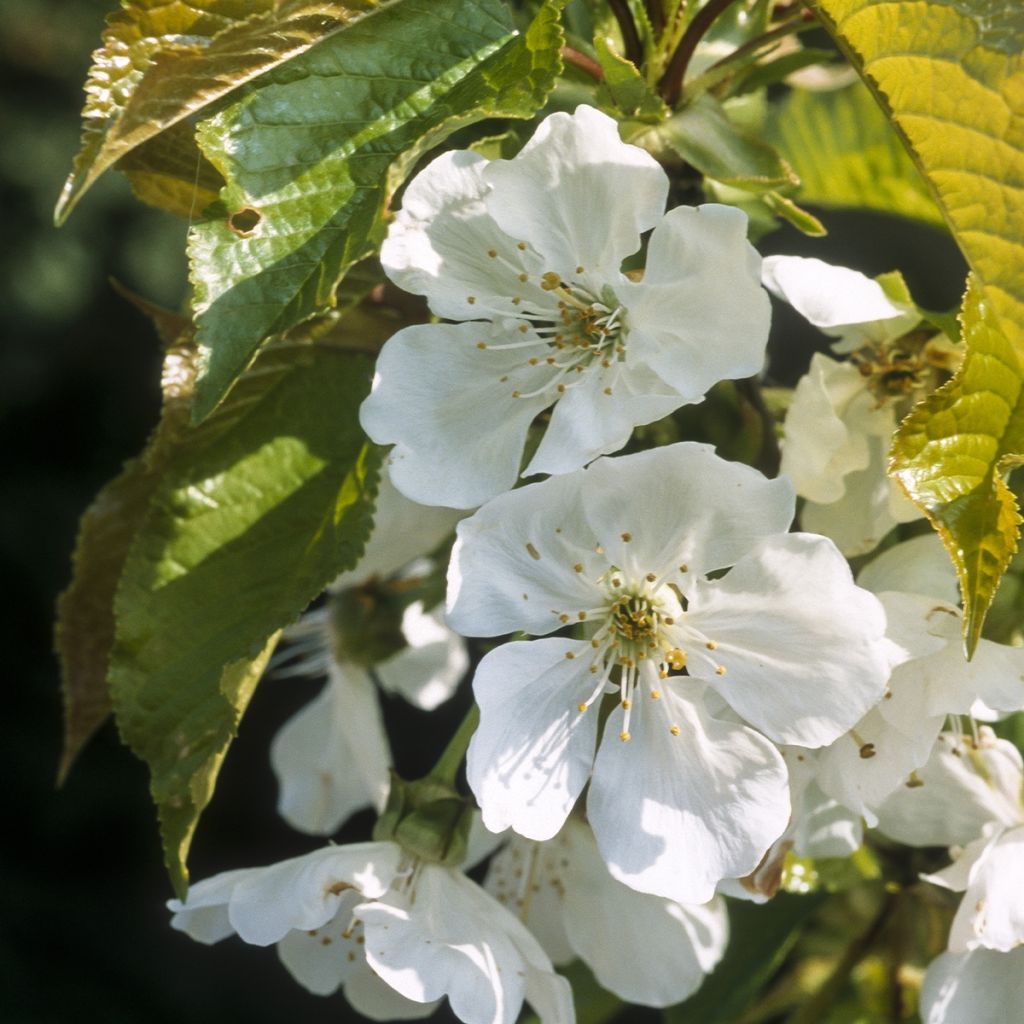

Cerisier Bigarreau Marmotte Bio
Prunus cerasus Marmotte - Organic Tart Cherry
Prunus cerasus Marmotte
Sour Cherry, Tart Cherry, Dwarf Cherry, Morello Cherry
Why not try an alternative variety in stock?
View all →This plant carries a 6 months recovery warranty
More information
We guarantee the quality of our plants for a full growing cycle, and will replace at our expense any plant that fails to recover under normal climatic and planting conditions.
Oversize package: home delivery by special carrier from €6.90 per order..
Express home delivery from €8.90.
Delivery to Corse prohibited: UE law prohibits the import of this plant from mainland France to Corse as part of the fight against Xylella fastidiosa. Please accept our sincere apologies.
More information
Description
The Organic ‘Bigarreau Marmotte’ Cherry Tree is the variety that ripens in early summer, in June-July. A good companion for the ‘Bigarreau de Burlat’, they complement each other well in terms of harvesting period and pollination. The ‘Marmotte’ cherry is slightly elongated, of fairly large size, with a small stone and a dark red shiny skin, very appetizing and less prone to splitting. It is a juicy and sweet fruit with a slightly acidic flavour. The tree is very vigorous and highly productive with a quick fruiting. Its spring flowering is magnificent and worthy of an ornamental garden. Harvest the cherries when fully ripe or they may be slightly bitter. Plants from Organic Agriculture.
The cherry tree, or Prunus cerasus, 'Bigarreau Marmotte' is an old variety discovered by a farmer in Jussy, in the Yonne region, in 1851. The tree reaches a height of 4 to 6 metres (13 to 20 feet) and a width of 3 to 4 metres (10 to 13 feet) at maturity. It blooms between the end of March and the beginning of April, and has good resistance to late frosts. Despite abundant flowering, this self-sterile variety needs to be associated with ‘Bigarreau de Burlat’ or ‘Bigarreau Reverchon’ to fruit well. Beware, the proximity of ‘Napoleon’, although a good pollinator for other varieties, will not be beneficial. 'Marmotte' will satisfy impatient gardeners, as it bears fruit quickly, usually within 2 or three years.
Very hardy in most regions, the ‘Marmotte’ Cherry Tree is more resistant to winter cold than summer heat. The flowers are damaged by spring frosts, so it is recommended to plant cherry trees in sheltered positions, facing west and protected from cold winds in regions with significant late frosts. Nevertheless, the very abundant flowering often results in satisfactory fruiting. The cherries are elongated and of good size, with a shiny dark red skin that is very appetizing, although they are somewhat prone to splitting. The flavour of ‘Marmotte’ is unique, as it is an old variety that retains its typical characteristics.
For transport reasons, our highest scions may be pruned before shipment. They are suitable for all common forms of training: cordons, espaliers, goblets, half-standards, and low standards, except for the formation of tall standards. If you would like more information or advice on training your fruit trees, please do not hesitate to contact us.
Report an error about the product description
Prunus cerasus Marmotte - Organic Tart Cherry in pictures
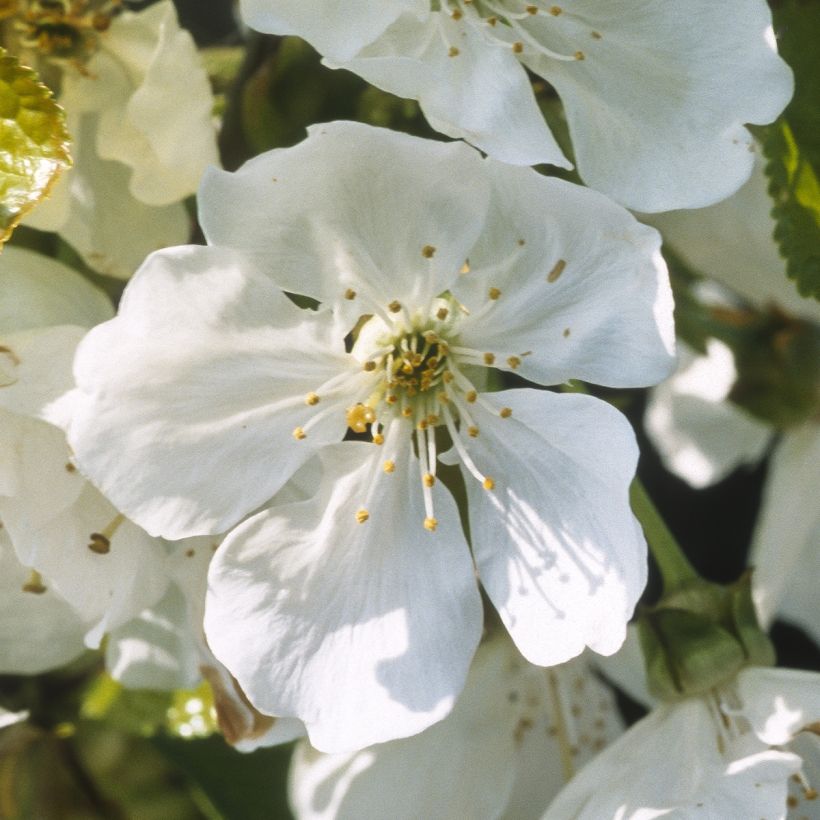

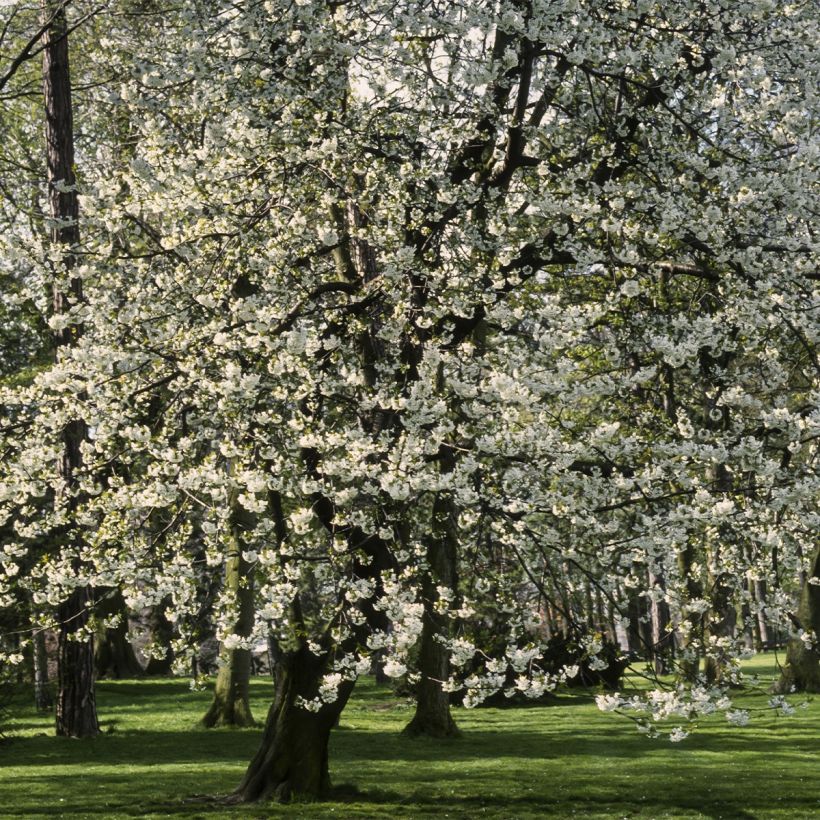

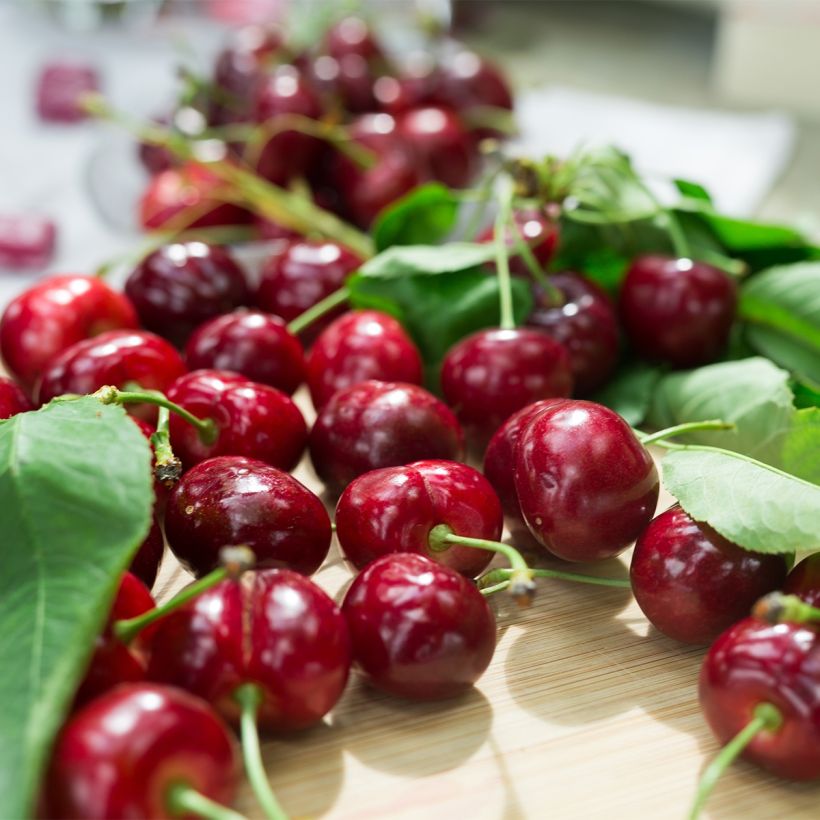

Plant habit
Fruit
Flowering
Foliage
Botanical data
Prunus
cerasus
Marmotte
Rosaceae
Sour Cherry, Tart Cherry, Dwarf Cherry, Morello Cherry
Cultivar or hybrid
Other Cherry trees
Planting and care
Easy to grow, the ‘Bigarreau Marmotte’ Organic Cherry Tree thrives in any type of soil, acidic or calcareous, as long as it is moist and light. However, it is not suitable for very clayey, shallow, and suffocating soils. Low-maintenance, it requires little to no pruning, although a light pruning of the tips at the end of fruiting every 3-4 years is necessary to maintain balanced branches. Removing crossing branches helps to keep good air circulation and facilitates harvesting.
Planting period
Intended location
Care
This item has not been reviewed yet - be the first to leave a review about it.
Ancient and local varieties
Haven't found what you were looking for?
Hardiness is the lowest winter temperature a plant can endure without suffering serious damage or even dying. However, hardiness is affected by location (a sheltered area, such as a patio), protection (winter cover) and soil type (hardiness is improved by well-drained soil).

Photo Sharing Terms & Conditions
In order to encourage gardeners to interact and share their experiences, Promesse de fleurs offers various media enabling content to be uploaded onto its Site - in particular via the ‘Photo sharing’ module.
The User agrees to refrain from:
- Posting any content that is illegal, prejudicial, insulting, racist, inciteful to hatred, revisionist, contrary to public decency, that infringes on privacy or on the privacy rights of third parties, in particular the publicity rights of persons and goods, intellectual property rights, or the right to privacy.
- Submitting content on behalf of a third party;
- Impersonate the identity of a third party and/or publish any personal information about a third party;
In general, the User undertakes to refrain from any unethical behaviour.
All Content (in particular text, comments, files, images, photos, videos, creative works, etc.), which may be subject to property or intellectual property rights, image or other private rights, shall remain the property of the User, subject to the limited rights granted by the terms of the licence granted by Promesse de fleurs as stated below. Users are at liberty to publish or not to publish such Content on the Site, notably via the ‘Photo Sharing’ facility, and accept that this Content shall be made public and freely accessible, notably on the Internet.
Users further acknowledge, undertake to have ,and guarantee that they hold all necessary rights and permissions to publish such material on the Site, in particular with regard to the legislation in force pertaining to any privacy, property, intellectual property, image, or contractual rights, or rights of any other nature. By publishing such Content on the Site, Users acknowledge accepting full liability as publishers of the Content within the meaning of the law, and grant Promesse de fleurs, free of charge, an inclusive, worldwide licence for the said Content for the entire duration of its publication, including all reproduction, representation, up/downloading, displaying, performing, transmission, and storage rights.
Users also grant permission for their name to be linked to the Content and accept that this link may not always be made available.
By engaging in posting material, Users consent to their Content becoming automatically accessible on the Internet, in particular on other sites and/or blogs and/or web pages of the Promesse de fleurs site, including in particular social pages and the Promesse de fleurs catalogue.
Users may secure the removal of entrusted content free of charge by issuing a simple request via our contact form.
The flowering period indicated on our website applies to countries and regions located in USDA zone 8 (France, the United Kingdom, Ireland, the Netherlands, etc.)
It will vary according to where you live:
- In zones 9 to 10 (Italy, Spain, Greece, etc.), flowering will occur about 2 to 4 weeks earlier.
- In zones 6 to 7 (Germany, Poland, Slovenia, and lower mountainous regions), flowering will be delayed by 2 to 3 weeks.
- In zone 5 (Central Europe, Scandinavia), blooming will be delayed by 3 to 5 weeks.
In temperate climates, pruning of spring-flowering shrubs (forsythia, spireas, etc.) should be done just after flowering.
Pruning of summer-flowering shrubs (Indian Lilac, Perovskia, etc.) can be done in winter or spring.
In cold regions as well as with frost-sensitive plants, avoid pruning too early when severe frosts may still occur.
The planting period indicated on our website applies to countries and regions located in USDA zone 8 (France, United Kingdom, Ireland, Netherlands).
It will vary according to where you live:
- In Mediterranean zones (Marseille, Madrid, Milan, etc.), autumn and winter are the best planting periods.
- In continental zones (Strasbourg, Munich, Vienna, etc.), delay planting by 2 to 3 weeks in spring and bring it forward by 2 to 4 weeks in autumn.
- In mountainous regions (the Alps, Pyrenees, Carpathians, etc.), it is best to plant in late spring (May-June) or late summer (August-September).
The harvesting period indicated on our website applies to countries and regions in USDA zone 8 (France, England, Ireland, the Netherlands).
In colder areas (Scandinavia, Poland, Austria...) fruit and vegetable harvests are likely to be delayed by 3-4 weeks.
In warmer areas (Italy, Spain, Greece, etc.), harvesting will probably take place earlier, depending on weather conditions.
The sowing periods indicated on our website apply to countries and regions within USDA Zone 8 (France, UK, Ireland, Netherlands).
In colder areas (Scandinavia, Poland, Austria...), delay any outdoor sowing by 3-4 weeks, or sow under glass.
In warmer climes (Italy, Spain, Greece, etc.), bring outdoor sowing forward by a few weeks.

































